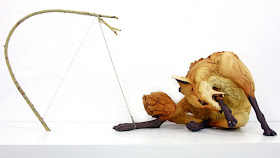The question of Mickey Mouse attempting suicide is one I
never expected to consider. But; why would the writers of the original Mickey Mouse
newspaper strip and Disney, himself want to create something so unusual and
startling? Under what circumstances would the lovable, optimistic, Chaplanesque
character of a mouse take his own life?
What devices might he use and how possibly to make this unlikely
thing…well; cute? There are many questions raised and there are answers to be
found.
The idea of Mickey’s suicide came from the great innovator
and man himself; Walt Disney. It is thought by some that the idea was based on the
silent film work of Harold Lloyd. One of Lloyd’s films, “Haunted Spooks”
featured a series of botched suicide attempts by the actor and Disney was
(pardon) blown away by them. This was in 1920 and it was among Disney’s
favorites. Why not try the same thing with Mickey?
In 1930 Disney started a comic strip for King Features Syndicate.
Walt had originally written Mickey’s strip with Ub Iwerks illustrating. Iwerks
would only work as the strip’s illustrator for a while handing over both
writing and illustrating to Floyd Gottfredson within the same year. Walt would continue
with some plotting and continuity for a while. We’ll let Mr. Gottfredson’s words
from a past interview speak from here:
"He would make
suggestions every once in a while, for some short continuities and so on, and I
would do them. One that I'll never forget, and which I still don't understand
was when he said, 'Why don't you do a continuity of Mickey trying to commit
suicide?' So I said, 'Walt! You're kidding!' He replied, 'No, I'm not kidding.
I think you could get a lot of funny stuff out of that.' I said, 'Gee whiz,
Walt. I don't know. What do you think the Syndicate will think of it? What do
you think the editors will think? And the readers? He said, 'I think it will be
funny. Go ahead and do it.' So I did, oh, maybe ten days of Mickey trying to
commit suicide—jumping off bridges, trying to hang himself... I don't remember
all the details. But strangely enough, the Syndicate didn't object. We didn't
hear anything from the editors, and Walt said, 'See? It was funny. I told you
it would be.' So there were a few things like that."
Floyd Gottfredson
The answer in reality is a simple and uncomplicated one; it
was done for laughs. In our politically correct, focused grouped, socially conscience
world “The Mickey Suicides” couldn’t and probably shouldn’t be published. I
would like to think the cartoons, by showing suicide as folly prevented some
potential suicides at the time of the strips publication. They are entertaining, humorous and life affirming.
Within the confines of the strip Mickey thought he had lost
his great love, Minnie. We know that Mickey survived, he reconciled with Minnie
and their romance (aside from a few expected bumps and minor bruises) thrives
to this day. Mickey and Minnie are infatuated with each other and life as we
continue our infatuation with them.













.jpg)





.jpg)






